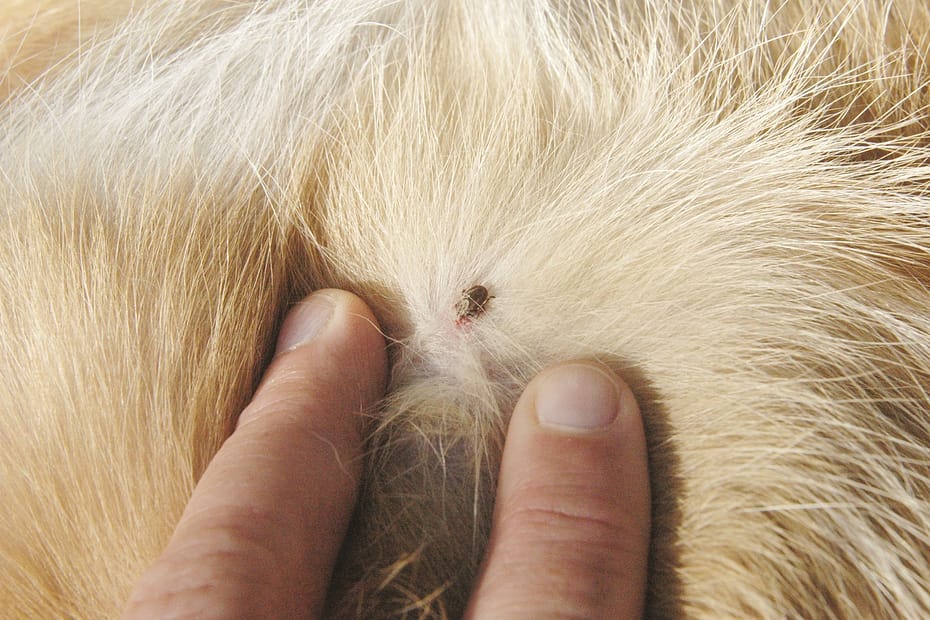Removing seed ticks from a dog requires careful attention and a gentle approach.
Here’s a step-by-step guide on how to remove seed ticks from your dog:
- Prepare the necessary tools: You will need fine-tipped tweezers or tick removal tools, rubbing alcohol, cotton balls or swabs, and a small container or ziplock bag.
- Find a well-lit area: Choose a location where you can clearly see the seed ticks on your dog’s body. Natural sunny light or a bright lamp can be helpful.
- Remember to Calm your dog: Ensure that your dog is calm and relaxed before attempting to remove the seed ticks. If necessary, get someone assists you in keeping your dog calm and still.
- Wear protective gloves: Wear disposable gloves to protect your hands during removal.
- Begin removal: Use the tweezers or other tick removal tools to gently grip the tick as close to the skin as you can, starting with the locations where you can see the seed ticks. The tick should not be squeezed or crushed to reduce the chance of spreading the disease.
- Steady removal: Pull the tick out straight and gently yet steadily. To prevent the tick’s mouthparts from breaking off and remaining in the skin, avoid twisting or jerking.
- Check for remaining ticks: Examine your dog’s entire body, paying special attention to the areas between the toes, around the ears, and under the armpits. Use the same approach to get rid of any extra seed ticks you find.
- Disposal: To ensure they are destroyed, put the extracted seed ticks into a little container or zip-top bag filled with rubbing alcohol. By doing this, they can’t reattach your dog or invade your house.
- Clean the bite areas: Clean the bite places on your dog’s skin with a mild antiseptic or rubbing alcohol after the seed ticks have been removed. A cotton ball or swab can be used to gently clean the area.
- Monitor for signs of infection: Watch out for any infection-related symptoms including redness, swelling, or discharge in the bite locations. Consult your veterinarian if you experience any alarming symptoms.
- Prevent future infestations: Consider utilizing the proper tick preventatives suggested by your veterinarian to reduce the likelihood of subsequent seed tick infestations. Oral drugs, topical remedies, and tick collars are a few examples of them.
Consult your veterinarian for advice and support if you have questions regarding the right procedure or if your dog has a lot of seed ticks.




